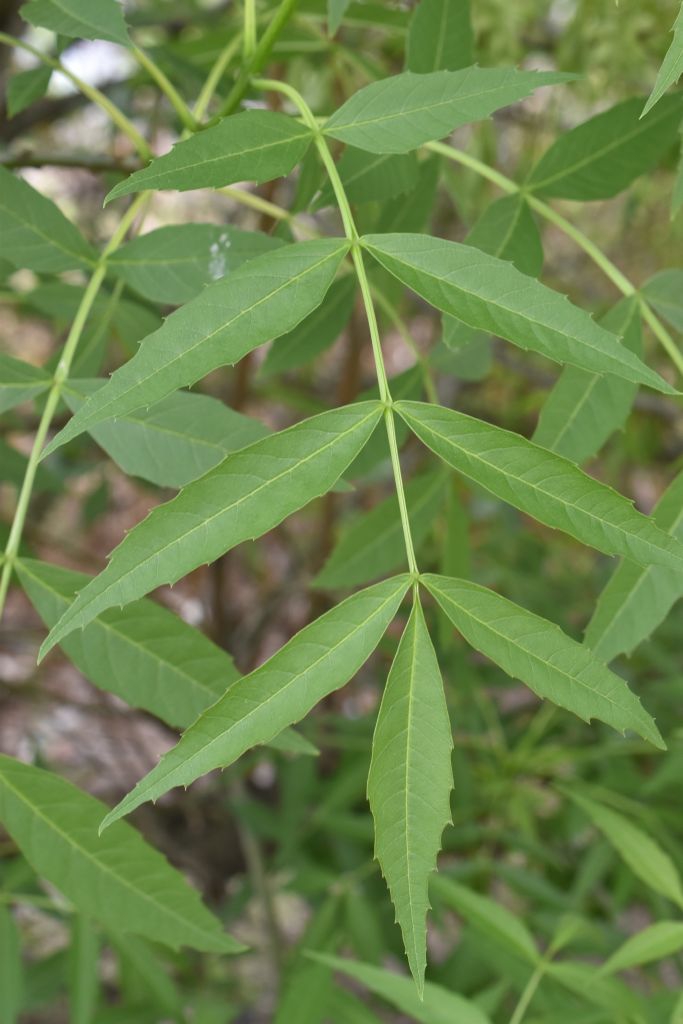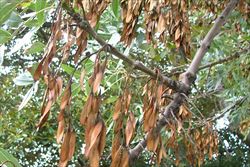Large deciduous tree with yellow leaves in autumn, around 20 m high. Also known as the Desert Ash.
Leaves are comprised of leaflets. Has brown buds in winter. Many flowers in spring and fruit.
Leaves
14 - 20cm long, usually 5 - 7 (occasionally 13) leaflets, which are each 5 - 8 cm long and 0.7 - 2 cm wide. Serrated edges with pointed leaf tips. Bright and shiny green on upper side and dark and pale on underside.
Flowers
Many inconspicuous flowers with no sepals or petals. Red to purple anthers (pollen-bearing part of a flower).
Fruits/Seeds
Fruits are samara (type of dry fruit that are winged to help carry the seed away on the wind). Samara are in a cluster of 6 - 10, flattened, 3 - 4 cm long with the seed confined to half the fruit.
Field Guide
Improve your identification skills. Download your Ash Tree field guide here!





